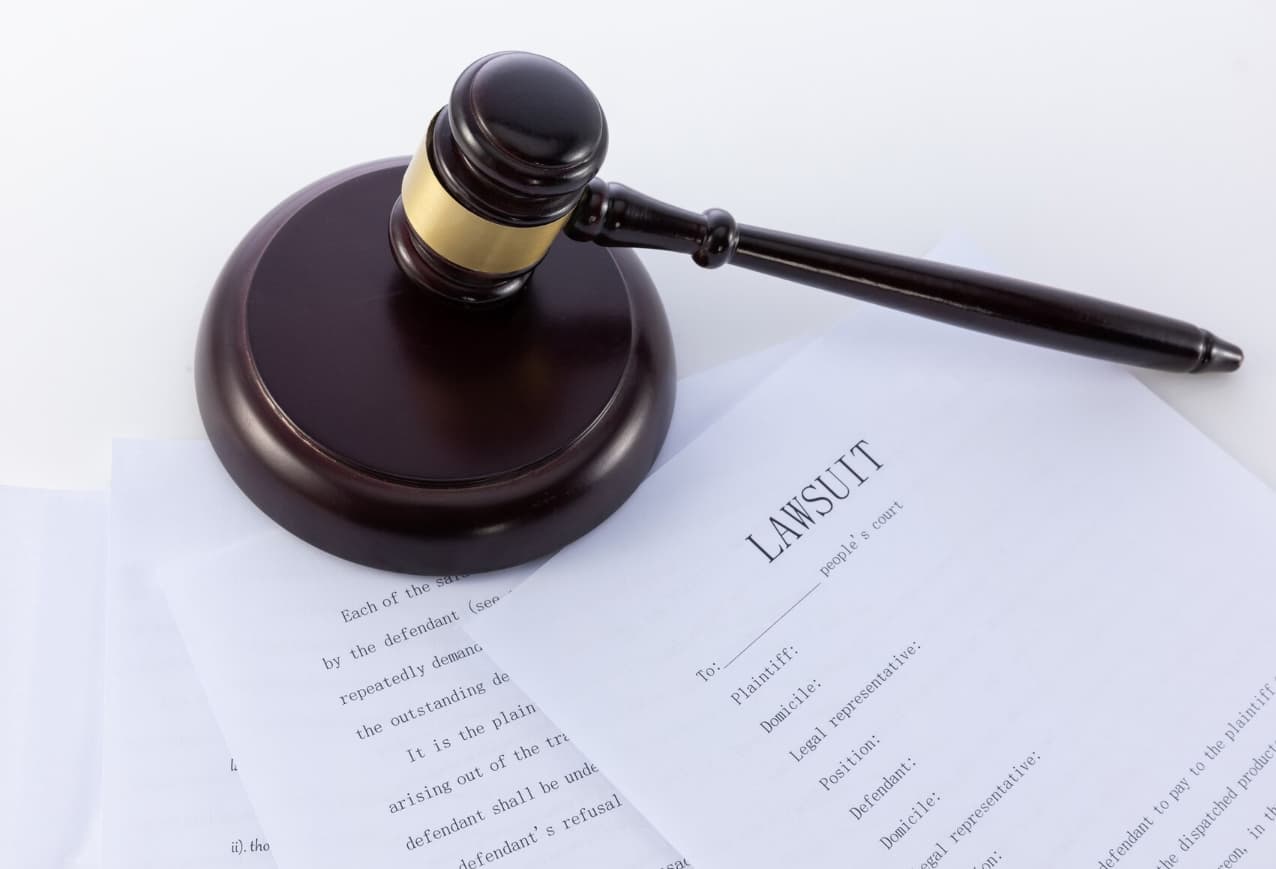Hey there! Have you heard about the Smoothstack lawsuit that’s been making waves in the tech world? If not, don’t worry – we’re about to dive into all the juicy details.
This case is shining a spotlight on some pretty important issues in the tech industry, especially when it comes to how companies treat their workers.
In this article, we’re going to break down what’s happening with Smoothstack, a company that helps train and place IT workers.
We’ll look at why they’re facing legal troubles, what it means for workers’ rights, and how it might change the way tech companies operate in the future.
Whether you’re a tech worker, thinking about getting into the field, or just curious about workers’ rights, this story has something for everyone.
So, grab a cup of coffee (or your beverage of choice), and let’s get into it!

Disclaimer:
This article is for educational purposes only. The legal landscape can change quickly, so there might be new updates since this was written.
Always check the latest information and consult with a legal professional if you need specific advice.
Background on Smoothstack Lawsuit
Smoothstack is an IT staffing agency known for its training programs that feed into jobs at major tech companies.
But a class action lawsuit filed by former employee Justin O’Brien alleges the company uses an abusive “Training Repayment Agreement Provision” (TRAP) and other unfair practices.
What Are the Smoothstack Lawsuits About?
Let’s start with the basics. Smoothstack is a company that does two main things:
- Training: They teach people the latest IT skills.
- Staffing: They help place these trained workers with big-name companies.
Sounds great, right? Well, that’s where things get a bit complicated.
Recently, Smoothstack has found itself in hot water. A class action lawsuit has been filed against them, claiming that their training program isn’t quite what it seems. Here’s the gist of what the lawsuit is saying:
- The training might be a smokescreen: Instead of genuinely helping workers, the lawsuit claims Smoothstack is using the training as a way to get cheap labor.
- There’s a catch: Workers have to sign something called a Training Repayment Agreement Provision (TRAP). This agreement has some pretty strict conditions.
Let’s break down what these TRAPs involve:
| TRAP Condition | What It Means |
|---|---|
| 4,000 billable hours | Workers must complete this many hours before they can take other jobs |
| $20,000+ penalty | If workers leave before completing their hours, they owe this much |
| 50% wage cut | Smoothstack keeps half of what workers earn |
| Minimum wage between jobs | Workers get paid very little when not on assignment |
As you can see, these conditions are pretty tough. The lawsuit claims that these TRAPs turn workers into “indentured servants” – a fancy way of saying they’re stuck in a job they can’t easily leave.
Breaking Down the Smoothstack Lawsuit Claims
Now, let’s get into the nitty-gritty of what the lawsuit is claiming. In April 2023, a former Smoothstack trainee decided enough was enough and took the company to court. Here are the main things the lawsuit says Smoothstack did wrong:
- Pushed unfair contracts: The lawsuit claims Smoothstack pressured people into signing contracts with tough non-compete clauses and big repayment obligations. This made it hard for workers to find other jobs or move up in their careers.
- Paid unfairly: Smoothstack allegedly underpaid workers by calling them “trainees” even when they were doing the same work as regular employees.
- Provided poor working conditions: Workers reported not getting proper pay or overtime, which goes against labor laws.
- Demanded illegal kickbacks: Even after a court said their TRAP agreements weren’t legal, Smoothstack kept trying to enforce them. This is like asking for illegal paybacks from workers.
- Interfered with job opportunities: The lawsuit says Smoothstack didn’t help workers find jobs like they promised. Instead, they stopped workers from finding better jobs on their own.
These are some serious claims, right? It’s no wonder this case is getting a lot of attention.
Round Two: The Department of Labor’s Smoothstack Lawsuit
Just when you thought things couldn’t get more intense, enter the Department of Labor (DOL). In July 2024, they decided to jump into the fray with their lawsuit against Smoothstack. Here’s what makes this round different:
- New location: This lawsuit was filed in New York, not Virginia where the first one was.
- Similar claims: The DOL is saying the same things as the first lawsuit.
- Added twist: They’re also saying Smoothstack broke some New York state laws.
But here’s the really interesting part: The DOL says Smoothstack’s practices are making it hard for them to do their job. How? Well, they say:
- It’s harder for them to investigate companies.
- Workers are scared to talk to DOL investigators.
The DOL is saying, “Hey, we can’t protect workers if they’re too afraid to talk to us!”
Now, the New York court has to decide if this can be a class action lawsuit. If it is, that means a lot more people could join in and potentially get help if Smoothstack is found to have done something wrong.
Workers’ Rights and Protections in the United States
The Smoothstack case isn’t just about one company. It’s shining a light on bigger issues in the tech world and beyond. Let’s look at some of the key workers’ rights issues this case brings up:
1. Non-compete agreements
- What they are: Contracts that say you can’t work for competing companies for a while after leaving a job.
- The problem: These used to be just for big shots, but now lots of regular workers have to sign them.
- Why it matters: It can make it hard for people to switch jobs or start their businesses.
2. Wage and hour laws
- What they are: Rules about minimum wage, overtime, and other pay issues.
- The problem: Some companies try to get around these laws by calling workers “contractors” or “trainees.”
- Why it matters: Workers might not get paid fairly for their time and effort.
3. Working conditions
- What they are: Laws about safety and health at work.
- The problem: Tech workers can face issues like eye strain, carpal tunnel, and stress from long hours.
- Why it matters: Even if you’re not doing physical labor, your job shouldn’t hurt your health.
4. Training and professional development
- What they are: Programs to help workers learn new skills.
- The problem: Some companies use these as a way to trap workers in bad jobs.
- Why it matters: Workers should be able to learn and grow without feeling stuck.
5. Collective bargaining and unionization
- What they are: Ways for workers to join together to negotiate with employers.
- The problem: Fewer workers are in unions these days, which can mean less power to fight for rights.
- Why it matters: When workers can stand together, they often get better pay and conditions.
Conclusion: What Does This Mean for the Future?
Whew! We’ve covered a lot of ground, haven’t we? So, what’s the big takeaway from all this Smoothstack drama?
First off, it’s clear that the tech industry is facing some growing pains. As companies race to find skilled workers, some might be cutting corners in ways that aren’t fair to employees.
The Smoothstack case is shining a spotlight on these practices, which could lead to some big changes.
Here are a few things to keep an eye on:
- More oversight: We might see stricter rules about how tech companies can train and hire workers.
- Changes to non-compete agreements: There’s a push to limit these, especially for regular workers.
- Better protections for trainees: Companies might have to be more careful about how they classify and pay people in training programs.
- Increased awareness: This case is making more people aware of their rights as workers, which is always a good thing!
Remember, laws and practices can change. If you’re in the tech industry or thinking about joining it, stay informed about your rights. Don’t be afraid to ask questions or speak up if something doesn’t seem right.
The Smoothstack case isn’t just about one company – it’s about shaping a fairer future for all workers in the fast-paced world of tech. And that’s something worth paying attention to!
Frequently Asked Questions
- Q: Can I join the Smoothstack lawsuit if I think I have a claim?
A: If you believe you have a claim against Smoothstack, you might be able to join the existing lawsuit. Your best bet is to talk to a lawyer who knows about class action cases. They can help you figure out your options. If the court says it’s okay for this to be a class action lawsuit, the lawyers handling the case will reach out to people who might be part of it.
- Q: If the lawsuit is successful, how much money could I get?
A: It’s hard to say for sure. If the people suing Smoothstack win or reach a deal, everyone in the group (called the “class”) will share the money. But not everyone will get the same amount. It depends on things like how involved you were in the case and your specific situation. If the court says this can be a class action lawsuit, the lawyers will let potential class members know about their rights and how much they might get.
- Q: What exactly is a Training Repayment Agreement Provision (TRAP)?
A: A TRAP is a kind of agreement where you promise to pay your employer a penalty if you leave your job before a certain time. In Smoothstack’s case, workers had to agree to work for a set number of hours or pay back the cost of their training. These agreements can be tricky because they can make it hard for workers to leave jobs they’re unhappy with.
- Q: Is what Smoothstack doing illegal?
A: That’s what the courts are trying to figure out. The lawsuits claim that some of Smoothstack’s practices break labor laws, but it hasn’t been proven in court yet. It’s a complex issue because it involves both federal and state laws.
- Q: How can I protect myself from unfair employment practices?
A: Here are a few tips:
- Always read contracts carefully before signing
- Ask questions if something isn’t clear
- Know your rights as a worker (check the Department of Labor website)
- Don’t be afraid to ask for help from a lawyer or workers’ rights organization if you think something’s not right
- Q: Will this case affect other tech companies?
A: It could! If the courts decide that Smoothstack’s practices aren’t okay, other companies might have to change how they do things too. This case could set a precedent (a kind of example) for how tech companies should treat workers, especially when it comes to training and employment agreements.
Also Check:



